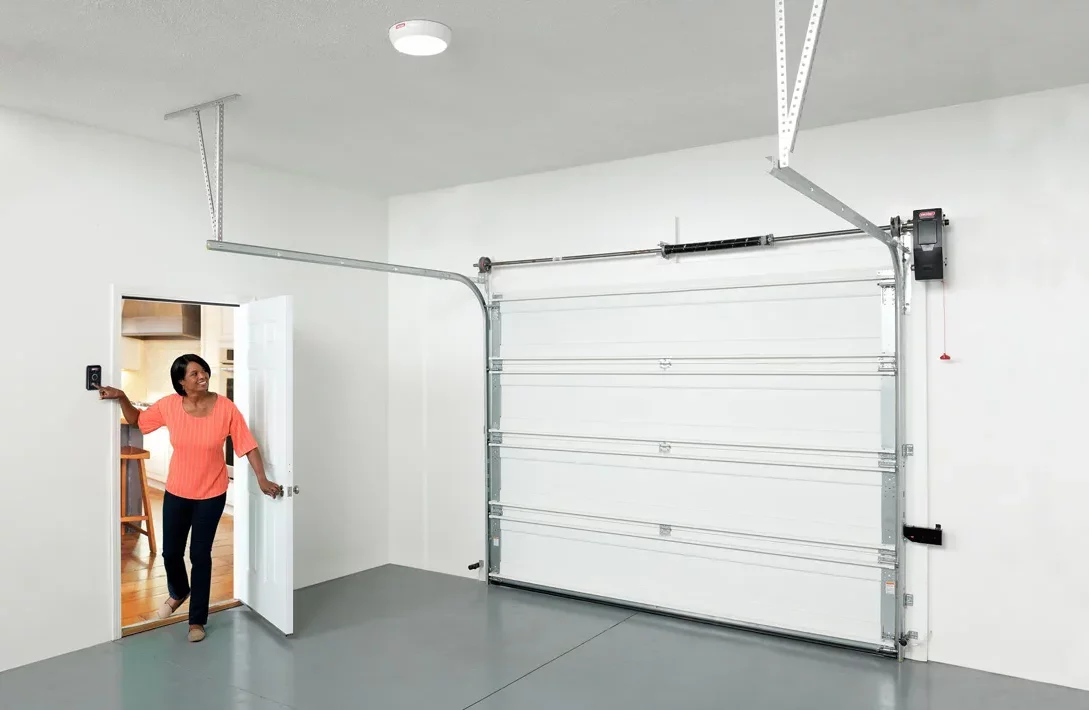Garage door openers have become a ubiquitous feature in homes, providing convenience, security, and ease of access. However, it’s crucial to recognize that garage doors can be heavy and pose potential safety hazards. To address these concerns, modern garage door openers are equipped with several safety features designed to protect you, your loved ones, and your property. In this article, we’ll explore the essential garage door opener safety features you should be aware of to ensure a safe and worry-free operation.
1. Automatic Reversal System
One of the most critical safety features in a garage door opener is the automatic reversal system. This system is designed to detect obstructions in the path of the closing door and automatically reverse its direction to prevent accidents or damage. There are two main types of automatic reversal systems:
- Photoelectric Sensors: These sensors are typically mounted on each side of the garage door, near the floor. They emit an invisible beam of light that spans the width of the door’s opening. If something obstructs the beam while the door is closing, the opener will reverse the door’s direction immediately. Regularly check and clean the sensors to ensure they are functioning correctly.
- Contact Sensors: These sensors use a pressure-sensitive mechanism that detects resistance when the garage door comes into contact with an object while closing. When resistance is detected, the opener reverses the door’s movement. Contact sensors are particularly useful for detecting objects that are low to the ground, such as a bicycle or a pet.
2. Force Setting Adjustment
Modern garage door openers are equipped with a force setting adjustment feature that allows you to control the amount of force used to open and close the door. This feature is essential for ensuring that the door operates smoothly and safely. If the force setting is too high, the door may not reverse when it encounters an obstruction, potentially causing damage or injury. Conversely, if the setting is too low, the door may not close properly. To ensure safety, follow the manufacturer’s recommendations for setting the appropriate force levels based on the weight and size of your garage door.
3. Manual Release Mechanism
In the event of a power outage or a malfunction, you should be able to operate your garage door manually. Modern garage door openers come equipped with a manual release mechanism, usually in the form of a red cord or handle hanging from the opener unit. Pulling the cord or handle disengages the door from the opener’s drive system, allowing you to manually open and close the door. Familiarize yourself with the location and operation of this manual release mechanism, as it can be a lifesaver in emergency situations.
4. Rolling Code Technology
Garage door openers are vulnerable to unauthorized access if they use fixed codes that can be easily intercepted by potential intruders. Rolling code technology addresses this security concern by generating a new and unique code each time the garage door is activated. This means that even if someone intercepts the code during transmission, it will be useless for future attempts to open the door. Most modern garage door openers utilize rolling code technology to enhance security and prevent unauthorized access.
5. Vacation Mode
If you plan to be away from home for an extended period, many garage door openers offer a vacation mode or lockout feature. Activating this mode disables remote access to the opener, preventing anyone from opening the garage door using a remote control or keypad. This feature is particularly useful for ensuring the security of your home while you’re away.
6. Safety Sensors Alignment Indicator
To ensure that your garage door’s safety sensors are functioning correctly, many modern openers come equipped with an alignment indicator. This indicator, often in the form of an LED light on the opener unit, helps you determine if the sensors are properly aligned. If the sensors are misaligned or obstructed, the indicator will signal a problem by flashing or displaying a specific color. Regularly check the alignment indicator and adjust the sensors if needed to ensure the safety system’s proper operation.
7. Wireless Keypad with Security Code
Wireless keypads provide a convenient way to open and close your garage door without the need for a remote control. However, it’s essential to ensure that your wireless keypad offers a security code feature. This feature allows you to set a unique code that must be entered on the keypad to activate the door. Be sure to choose a secure and memorable code, and avoid using easily guessable combinations such as birthdays or sequential numbers.
8. Motion Detection Lighting
Many garage door openers come equipped with motion detection lighting features. These lights automatically illuminate the area around your garage when they detect motion, providing added safety and security. Motion detection lighting can help you navigate safely in the dark, deter potential intruders, and ensure that you’re aware of your surroundings when entering or exiting the garage.
9. Timer-to-Close Feature
The timer-to-close feature allows you to set a specific amount of time for your garage door to close automatically after it has been opened. This feature is not only convenient but also enhances security by ensuring that your garage door is not left open unintentionally. Make use of the timer-to-close feature to have peace of mind knowing that your garage is secure, even if you forget to close the door manually.
10. Battery Backup
A power outage can leave your garage door opener inoperable, potentially trapping your vehicle inside or preventing you from accessing your home. To address this concern, some garage door openers are equipped with a battery backup system. This system allows the opener to function even when there is no electricity, ensuring that you can open and close your garage door in emergencies or during power outages.
Conclusion
Garage door opener safety features are designed to protect you, your family, and your property from potential accidents and security threats. Familiarizing yourself with these features and regularly maintaining your garage door opener can help ensure its proper function and reliability. Remember that safety should always be a top priority when operating your garage door, and never bypass or disable any safety features. By taking the necessary precautions and using your garage door opener responsibly, you can enjoy the convenience and security it provides while minimizing potential risks.








